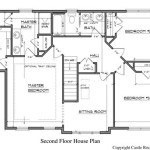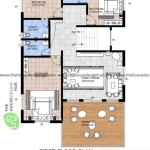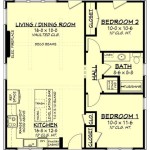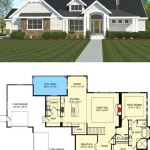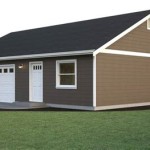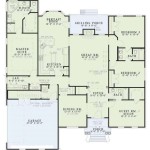Cape Cod Renovation Floor Plans: Navigating the Challenges and Opportunities
Renovating a Cape Cod style home presents a unique set of challenges and opportunities. The architectural style, characterized by its steeply pitched roof, central chimney, and often, dormer windows, necessitates careful planning when modifying interior spaces. Understanding the nuances of this design, particularly when it comes to floor plans, is crucial for a successful and satisfying renovation.
Cape Cod houses, originally designed for practicality and resilience against harsh weather conditions, often have smaller, compartmentalized rooms. Modern homeowners, however, frequently desire more open and flowing layouts. This dichotomy is where the expertise in renovation floor planning becomes invaluable. The goal is to modernize the living spaces while respecting the home's original character and structural integrity.
Understanding the Existing Structure: A Foundation for Success
Before even considering the design aspects of new floor plans, a thorough assessment of the existing structure is paramount. This involves a comprehensive inspection, typically conducted by a qualified structural engineer or experienced contractor. The inspection should identify any existing structural issues, such as foundation problems, termite damage, or weakened framing. Addressing these issues is essential before embarking on any major renovations.
Furthermore, understanding the load-bearing walls is critical. Removing or altering a load-bearing wall without proper support can compromise the structural stability of the entire house. Identifying these walls and determining the feasibility of opening them up, often with the addition of beams or columns, is a fundamental step in developing renovation floor plans. Original blueprints, if available, are an invaluable resource during this phase. If blueprints are not accessible, careful measurements and analysis of the framing are necessary.
The location of plumbing and electrical systems also needs to be carefully considered. Relocating bathrooms or kitchens, while potentially desirable for creating a more modern layout, can be significantly more expensive and complex than simply moving walls. Existing plumbing and electrical lines need to be rerouted, and this can involve opening up walls and floors. Planning for these potential costs and logistical challenges is crucial for staying within budget and timeline.
The attic space is another area deserving careful attention. In many Cape Cod homes, the attic is unfinished and potentially usable as living space. Converting the attic into bedrooms, a home office, or a playroom can significantly increase the square footage of the house. However, this conversion will likely require adding dormer windows to increase headroom and natural light, as well as ensuring adequate insulation and ventilation.
Optimizing Space and Flow: Modernizing the Cape Cod Layout
One of the most common goals of a Cape Cod renovation is to create a more open and flowing layout. This often involves removing walls between the kitchen, dining room, and living room to create a larger, more cohesive living space. However, completely removing walls can sometimes detract from the home's original character. A balance must be struck between creating open space and preserving the charm and historical relevance of the Cape Cod style.
An alternative approach to completely removing walls is to create partial walls or archways. These features can help define different areas within the larger space while still maintaining an open feel. They can also serve as a visual reminder of the original layout, preserving a sense of history. Strategic placement of furniture and rugs can further define different zones within the open space.
Another common renovation goal is to improve the functionality of the kitchen. Cape Cod kitchens are often small and cramped, lacking adequate counter space and storage. Expanding the kitchen, either by removing walls or by adding an addition, can significantly improve its functionality. Designing a modern kitchen layout that incorporates features such as an island, a pantry, and ample storage space is essential for creating a comfortable and efficient cooking environment.
The use of natural light is also a key consideration in optimizing space and flow. Cape Cod houses can sometimes feel dark and closed-in, especially in the winter months. Adding larger windows or skylights can dramatically increase the amount of natural light entering the house. Strategic placement of mirrors can also help to reflect light and make the space feel brighter and more spacious.
Maintaining Architectural Integrity: Respecting the Cape Cod Aesthetic
While modernizing the interior is often a primary goal, maintaining the architectural integrity of the Cape Cod style is equally important. This involves preserving key features of the house, such as the steeply pitched roof, the central chimney, and the dormer windows. Altering these features can significantly detract from the home's character and value.
When adding an addition to a Cape Cod house, it is important to design the addition in a way that complements the existing structure. The addition should blend seamlessly with the original house, both in terms of its architectural style and its materials. Using similar siding, roofing, and window styles can help to create a cohesive and visually appealing design.
Interior design choices can also contribute to maintaining the architectural integrity of the Cape Cod style. Using traditional materials, such as hardwood floors, exposed beams, and shiplap walls, can help to create a warm and inviting atmosphere that is consistent with the home's original character. Choosing furnishings and accessories that are in keeping with the Cape Cod aesthetic, such as antique furniture, nautical decor, and quilts, can further enhance the home's charm.
Pay attention to the details. Simple changes like maintaining the original window trim, preserving exposed rafters, or incorporating a classic New England color palette can make a significant difference in retaining the Cape Cod feel. The goal is not to create a museum piece, but rather to subtly blend modern amenities with the inherent historical charm of the house.
Furthermore, consult with architects and contractors who have experience working with Cape Cod style homes. Their expertise will be invaluable in navigating the challenges of renovating this type of house and ensuring that the renovation is both successful and respectful of the home's historical significance. They can provide insights into appropriate materials, construction techniques, and design elements that will enhance the home's character and value.
In conclusion, renovating a Cape Cod house requires careful planning and attention to detail. By understanding the existing structure, optimizing space and flow, and maintaining architectural integrity, homeowners can create a modern and comfortable living space while preserving the charm and historical relevance of this iconic architectural style. Careful consideration of floor plans is the key to achieving this balance and ensuring a successful renovation project.

Cape Cod Second Floor Additions Before And After Bluestem

Ham Cape Cods Modular Home Floor Plan The Plans House

Cape Cod House Plans With Gabled Dormers

Space Planning A Cape Add On Building Advisor

Cape Cod House Plans

Cape Cod House Plans Find Floor And Designs

Cape Cod Floor Plans Monster House

Adorable Cottage Gets A Wonderful Update Between Naps On The Porch

Cape Cod House Plans With Gabled Dormers

Pin On Cape House Renovation


